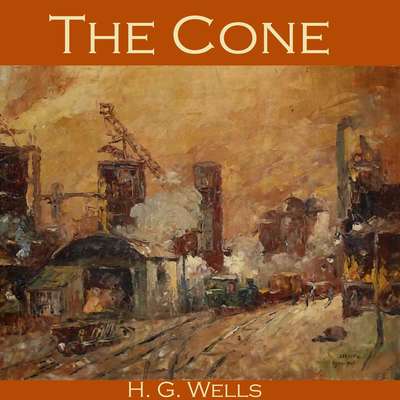“The Cone” is a short story by the English author H. G. Wells (1866–1946) set in the Potteries, where Wells was at the time he wrote it convalescing after a serious illness. Written in 1888, it was first published in the Unicorn magazine in 1895, and subsequently in The Plattner Story and OthersCollection of 17 short stories by H. G. Wells, first published in 1897. (1897), The Country of the Blind and Other StoriesCollection of 33 short stories by H. G. Wells, first published in 1911. (1911), and The Door in the Wall and Other StoriesCollection of eight short stories by H. G. Wells, first published in 1911. (1911).[1] The story, as told by an unnamed third-person narrator, concerns one man’s fatal revenge on an artist he suspects of having an affair with his wife.
Synopsis
Raut, an artist, is visiting Mrs Horrocks, with whom he has fallen in love. They are deep in conversation planning their future together when Mr Horrocks, manager of the Jeddah Company Blast Furnaces, abruptly enters the room. The artist claims that he has called to take Horrocks up on his offer of showing him around the ironworks that night, to see the “fine effects of moonlight and smoke”, but from his demeanour it seems to Mrs Horrocks that her husband suspects the truth.
Horrocks and Raut walk towards the ironworks, on a route that takes them near the railway line, and Raut begins to wonder if Horrocks, guiding him roughly by the arm, is trying to push him into danger. Once inside the factory, Horrocks shows Raut the cone over the “throat” of a furnace, which is held from above by a chain; the cone shuts off the heat from the furnace to save energy, and is regularly lowered by the chain so that fuel can be added.
Horrocks seizes Raut by the arm; Raut loses his balance and falls, saving himself by clutching the chain of the cone. “Horrocks, he saw, stood above him by one of the trucks of fuel on the rail. The gesticulating figure was bright and white in the moonlight, and shouting, “Fizzle, you fool! Fizzle, you hunter of women!” But Horrocks’s anger passes as he sees Raut, now “a cindery animal, an inhuman, monstrous creature that began a sobbing intermittent shriek”. Knowing Raut to be already dead and beyond salvation, Horrocks tips a truckload of coal over “the struggling thing that had once been a man”, and with that the shrieking ends.
See also
- H. G. Wells bibliographyList of publications written by H. G. Wells during the more than fifty years of his literary career.
External links
- Full text of “The Cone” at Project Gutenberg

